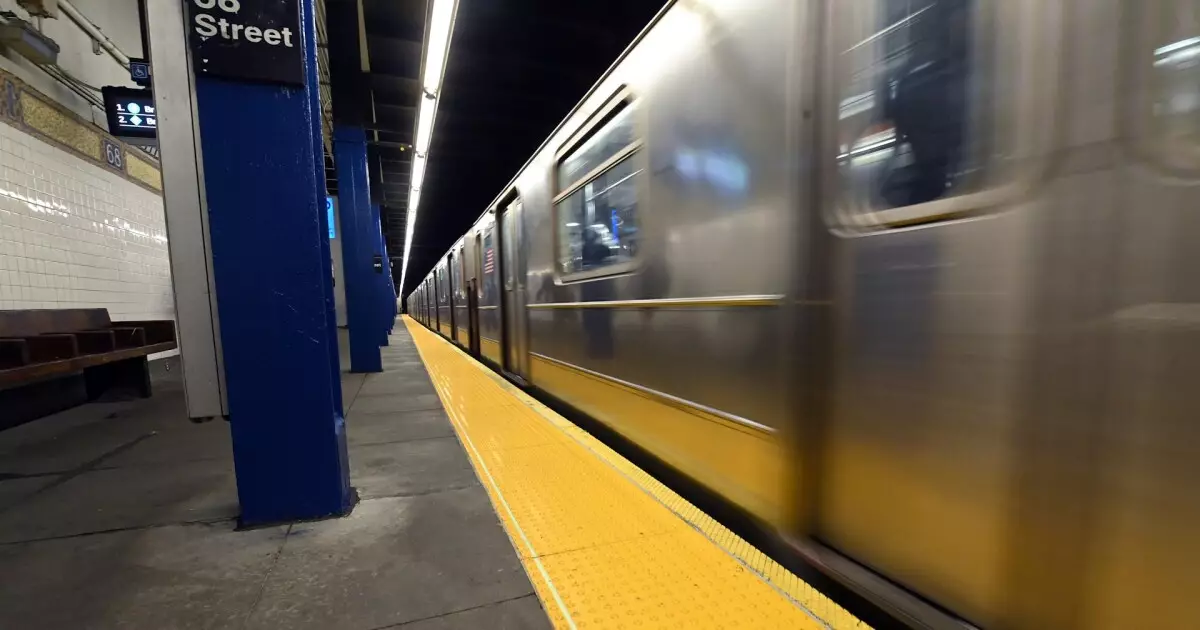The ongoing challenges surrounding the New York Metropolitan Transportation Authority (MTA) illustrate the complexities of public transportation funding in the state. Recent developments highlight a $68 billion capital plan for 2025-2029 that has been vetoed by the state’s Capital Program Review Board due to significant budgetary gaps. This situation raises critical questions about governance, funding methods, and the future of public transportation in New York.
The state legislature’s rejection of the MTA’s ambitious capital plan was spearheaded by Senate Majority Leader Andrea Stewart-Cousins and Assembly Speaker Carl Heastie. In a joint statement, the leaders expressed their concerns regarding a staggering $33 billion budget shortfall, signaling that the current proposal was untenable without clear funding solutions. This legislative veto not only quashes the proposed plans but also places significant pressure on Governor Kathy Hochul, who is now tasked with formulating a strategy to bridge this financial gap in her upcoming budget proposal.
MTA spokesperson John McCarthy remarked that the capital plan was heavily influenced by a 20-Year Needs Assessment, suggesting that the agency had laid out a comprehensive framework for future transit developments. However, the absence of legislative objections prior to the veto raises important questions about the communication dynamics between the MTA and the state legislature.
The legislators’ veto appears to be a calculated maneuver designed to exert greater influence over the budgetary process. Rachael Fauss, a senior policy advisor at Reinvent Albany, suggests that this tactic exposes the inherent flaws in how capital plans are managed, primarily the fact that these plans are constructed with known funding gaps. As it stands, the MTA passes its capital plans on the assumption that additional financial resources will be discovered in subsequent years, creating a cycle of uncertainty that disrupts planning and operations.
This veto is not the first of its kind; the review board has historically rejected capital plans lacking robust funding assurances. The MTA’s 2015-2019 plan faced similar scrutiny, thus indicating a pattern of conflicts in financial planning. The challenge remains whether the current board, influenced by political tides, will ultimately endorse a new viable solution.
The Capital Program Review Board, comprising representatives from the governor’s office, the New York City mayor’s office, and the state legislature, is positioned as a critical checkpoint in the funding process. However, the decision-making structure can sometimes feel convoluted, lacking transparency and accountability. The board’s ability to veto plans after they have already been proposed creates a bottleneck that can hinder effective project timelines.
Past experiences suggest that while the MTA has occasionally managed to push plans through the review board, the legislative gridlock can lead to delays that undermine timely infrastructure improvements. Fauss highlights the necessity for reforms to make this process more streamlined and effective, thus facilitating better cooperation among stakeholders.
As Governor Hochul prepares to unveil a new funding strategy, the looming $33 billion gap serves as a critical focal point. Throughout the upcoming fiscal discussions, it will be essential for all parties to collaborate on identifying viable and equitable funding solutions. Regional taxes have seen limited success in the past, primarily due to reluctance from the legislature to broaden the tax burden beyond New York City boundaries. This raises concerns about the sustainability of funding that seems disproportionately reliant on urban taxpayers, potentially alienating constituents.
Another avenue worth exploring could involve an increase in the state’s capital contribution, which has historically contributed significantly more in previous funding cycles. Enhancing this contribution could alleviate some pressure off the MTA and facilitate smoother operations, as the pressure to mitigate debt accumulation is an ongoing struggle for the agency.
The implications of this veto and the indefinite status of the capital plan underscore not only the financial challenges of the MTA but also highlight the dire need for comprehensive and cohesive infrastructural planning. With an estimated $90 billion in capital needs identified, including essential repairs and upgrades, any delays in funding could severely impact the quality and efficacy of New York’s transit system.
It’s imperative that leaders engage in constructive dialogue post-veto, keeping in mind the broader ramifications of inaction. Hochul’s commitment to addressing these issues will significantly affect the trajectory of the MTA and, by extension, the ongoing mobility needs of millions of New Yorkers. Only through sustained collaboration can the state emerge from this funding impasse, ensuring that the MTA can fulfill its role as a vital component of the region’s infrastructure and economy.

